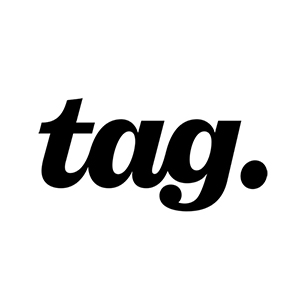What is modular content and why do pharma marketers need it NOW?

Modular content is an established practice among digital and content marketers in sectors such as FMCG and retail, who are challenged with increasing demand for more content and creating personalised content to meet the demands of their customers. It is a newer concept for pharma marketers, however, who are now turning to modular solutions in response to the accelerated demand for content over the past year.
Robb DeFilippis, managing director, life sciences, for end-to-end global creative production and sourcing partner Tag in the Americas agrees.
“The marketing content mix for pharma is evolving and pharma marketers are eager to find ways to produce more content, quickly, while reducing inefficiencies and generating savings,” explains Robb. “Modular content and the standardisation of processes, platforms and workflows – while not the answer to all content creation, will offer marketers a very efficient and cost-effective way to get derivative content based on core campaign creative in market quickly, while generating savings that can be applied to additional tactics or channels.”
But, as Robb notes, although the actual architecture required to achieve that will vary from company to company, it’s a transition that will involve every stakeholder in the marketing content workflow.
“With a modular content eco-system, a central repository of brand assets, claims, references, etc combined with the approved tactical templates means additional content takes minutes to create rather than weeks.”
Robb DeFilippis
Doing more in the digital space
Modular content, or ‘atomic’ design as it’s sometimes known, is the process of creating modules of content to be assembled in any way the user requires. It can be used for sales, marketing and patient communication materials, in print or digital form.
It might encompass elements such as headlines, body copy, images, calls-to-action, legal copy and logos, and the content can then be used as a framework for messages. It means that designs can be carried out in a more templated fashion than at present and presents a change from marketing-as-usual.
“The traditional approach has included a waterfall-type methodology where it's very linear; content is created and delivered, but it's not often shared across the organisation. We’ve even seen cases where assets were not shared among the same brand teams,” Robb explains. “This results in inefficiencies including additional, duplicative or derivative content needing to be created from scratch due to the lack of a modular content eco-system. With a modular content eco-system, a central repository of brand assets, claims, references, etc combined with the approved tactical templates means additional content takes minutes to create rather than weeks.”
One of the downsides of focusing on immediate needs, as opposed to how assets might be repurposed in the future, is that it can often introduce wasteful inefficiencies and somewhat cumbersome methodologies and production workflows, but that’s changing.
“We’re seeing huge initiatives by our clients to globalise content, where applicable, so it can be used across cultural or regulatory differences and there's a movement to be much more modular and to break out of silos while doing so,” Robb says.
A modular content ecosystem
The need to escape pharma’s traditional ways of approaching marketing content is becoming ever-clearer as the impact of 2020’s digital transformation of pharma and healthcare reveals itself.
“Greater emphasis has now been placed on repurposing existing assets, ‘shoot-once-use-many-times’. The global pandemic stifled many content production shoots and live content creation. The past 14 months have underscored the need for larger volumes of ready-to-use assets.” says Robb.
“Pharma marketers are continually challenged to optimise and globally deliver content, which exposes the need for a higher volume of assets that will rapidly get through regulatory and can quickly be used to successfully and efficiently create a higher volume of quality marketing materials that are speaking in a consistent brand voice.”
One of the ways to meet these challenges is to have pre-approved materials and elements lined-up. In this way it alleviates the need to keep jumping through the same old regulatory hoops for the same content, which can all too easily bring the process to a screeching halt.
“All stakeholders along the content delivery journey need to make it a priority to gain efficiencies where they can. The regulatory teams, who have a very high-touch, high-risk role in the process - and a very necessary one - have to be innovative in their approach as well, in order to shave time off of what is traditionally the slowest part of the workflow,” says Robb.
But he’s clear that the templated approach required by modular content needn’t stifle innovation.
“We're all trying to find ways to automate. One of the primary lessons that we’ve learned is that it's all about collaboration. Success hinges on opening up and having pharma’s internal teams working together to speed up the process."
Robb DeFilippis
“Content developers realise they need to be flexible in their approach. The modular content workflow is a little bit more rigid and can lend itself to creating large volumes of content in a more formulaic way, but you can still create amazing creative in a modular and templated fashion.”
Set against this need to think creatively about creativity, there are many different degrees and elements of efficiencies that can be realised if, as Robb notes, “all make it a priority to make modular content a success”.
Change management: the key to modular success
However, successfully using modular content in pharma will not come without a series of adjustments, and it’s not just traditional marketing approaches that need to change.
“The key and the most critical piece of moving towards this type of ecosystem for pharma marketers is change management,” Robb says. “Every single touchpoint along the way of content creation and production is going to experience some level of change.”
Amid these adjustments, it will be vital to ensure that marketing, commercial and regulatory teams all work closely together.
He adds: “One of the primary lessons that we’ve learned is that it's all about collaboration. Success hinges on opening up and having pharma’s internal teams working together to speed up the process. It's got to be a top-down-driven change management effort within the organisation and really all parties have to be working in concert. Marketing teams, the commercial teams, the regulatory teams – all have to accept that both internal and external silos need to be broken down to ensure optimisation of this critical element of the pharma marketing ecosystem.”
About the interviewee
 Robb DeFilippis is an accomplished marketing operations executive, with 25 years of experience leading organisations and clients to more efficient, profitable and innovative creative production, sourcing and business process excellence. Robb has held leadership positions at major ad agency networks including Omnicom, WPP, Publicis and IPG across sectors such as CPG, Health and Beauty, Finance, Automotive and Fashion. He’s dedicated the last 10 years of his career to servicing the Life Sciences sector and continues to serve this industry. For Tag, Robb’s emphasis is building highly functioning, client centric, creative delivery teams who execute across all media and regulatory tactics including digital, print, outdoor, video, social, broadcast, MLR submissions and packaging – serving audiences comprised of HCP, patient, sales and point-of-care.
Robb DeFilippis is an accomplished marketing operations executive, with 25 years of experience leading organisations and clients to more efficient, profitable and innovative creative production, sourcing and business process excellence. Robb has held leadership positions at major ad agency networks including Omnicom, WPP, Publicis and IPG across sectors such as CPG, Health and Beauty, Finance, Automotive and Fashion. He’s dedicated the last 10 years of his career to servicing the Life Sciences sector and continues to serve this industry. For Tag, Robb’s emphasis is building highly functioning, client centric, creative delivery teams who execute across all media and regulatory tactics including digital, print, outdoor, video, social, broadcast, MLR submissions and packaging – serving audiences comprised of HCP, patient, sales and point-of-care.
About Tag
Tag partners with pharmaceutical companies to help them effectively communicate with HCPs and patients, by increasing marketing efficiency, driving speed-to-market and delivering launch and regulatory excellence. As the leading creative production partner to brands and agencies, Tag offers a complementary skillset to in-house teams and advertising agencies to bring to life, extend and deploy creative ideas.












